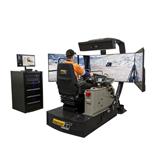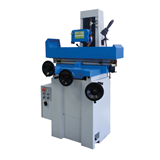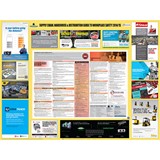Struggling to find skilled workers in Australia? Discover practical strategies using training, tech and government support to solve labour shortages in 2025.
Key takeaways
- Skilled labour shortage is impacting industries like construction, manufacturing, healthcare, and agriculture across Australia, leading to delayed projects, increased costs, and missed growth opportunities.
- Upskilling and micro-credentials are emerging as fast, flexible training pathways that address gaps without disrupting operations.
- Technology adoption, such as automation, digital twins, and AI-assisted workflows, can supplement labour, reduce repetitive tasks, and attract tech-savvy talent.
- Government initiatives including fee-free TAFE and workforce development funding can significantly lower the barrier to training investment.
- Retention strategies must go beyond wages, offering career progression, mentorship, and flexible work models is critical.
- Collaborative models with industry-led training and employer partnerships (e.g., Group Training Organisations) are proving successful in filling persistent workforce gaps.
Introduction: Why labour shortages are every industry's problem
Australia is grappling with one of its most persistent economic challenges: a skilled labour shortage. According to Jobs and Skills Australia, 36% of all occupations assessed in 2023 faced national shortages, up from 31% in 2022. Whether you're running a construction firm in Melbourne, a manufacturer in regional NSW, or a healthcare provider in Perth, chances are you're already feeling the pinch.
Labour shortages aren’t just about having too few people, they’re about not having the right people with the right skills, at the right time. As industries recover post-COVID and pursue ambitious infrastructure and digitisation goals, finding qualified workers has become both an operational risk and a strategic priority.
In this article, we explore how Australian businesses can address skilled labour shortages through targeted training pathways and technology investment. We’ll highlight practical solutions, government support options, and industry best practices that can help you stay productive, compliant, and future-ready.
Understanding the skills gap: Where and why it’s widening
Australia’s skilled labour shortage isn’t just a matter of too few workers, it’s a mismatch between the skills industries need and what’s available in the workforce.
According to the 2023 Skills Priority List by Jobs and Skills Australia, 36% of assessed occupations face national shortages, with demand surging in:
High-demand sectors
- Construction & infrastructure: Electricians, plumbers, scaffolders, project managers
- Why: Government megaprojects, housing shortages, and urban expansion
- Stat: The Housing Industry Association reports Australia needs 90,000+ extra construction workers to meet targets.
- Healthcare & aged care: Nurses, aged care workers, allied health assistants
- Why: An ageing population and rising chronic care needs
- Stat: Australia’s over-65 population is set to double by 2050 (ABS).
- Manufacturing & engineering: CNC machinists, fitters, process technicians
- Why: Local reshoring of manufacturing and defence sector growth
- Note: Engineers Australia reports persistent shortages in mechanical and mechatronic fields.
- Agriculture & trades in regional areas: Diesel mechanics, machinery operators, livestock workers
- Why: Workforce migration to cities and dependence on seasonal labour
- Impact: Labour shortages cost the ag sector over $22 billion in 2022–23 (NFF).
- IT & digital services: Cybersecurity analysts, developers, data engineers
- Why: Tech adoption across all industries
- Stat: Australia needs 1.2 million tech workers by 2030, but is tracking 200,000 short (Tech Council of Australia).
Why the gap is widening
Several key forces are making it harder to match labour supply with industry needs:
1. Ageing workforce
- Many skilled trades and healthcare roles are held by workers nearing retirement.
- In construction, 29% of workers are over 50 (ABS, 2023), with too few apprentices coming through to replace them.
2. Migration constraints
- Post-COVID skilled migration hasn’t fully rebounded.
- Occupation list mismatches, processing delays, and regional barriers continue to limit skilled worker arrivals.
- 2022–23 saw only 100,000 skilled migrants, down from 190,000 pre-COVID.
3. Training misalignment
- TAFE and RTO course content often lags behind industry needs.
- Employers say nearly half of new hires lack job-ready skills (Ai Group, 2023).
- In fast-evolving areas like robotics or advanced manufacturing, practical training is scarce or too theoretical.
4. Technology outpacing skills
- Automation and digital tools are reshaping job roles, requiring hybrid skillsets.
- Yet, most training models still teach outdated, siloed skills.
- Example: Businesses introducing CNC and smart machinery report months of lost productivity due to a lack of trained operators.
Regional challenges deepen the divide
In regional and remote Australia, the gap is wider:
- Fewer training providers and limited access to short courses
- Ongoing youth outmigration to urban centres
- Employers rely heavily on ageing generalists or FIFO workers, which limits long-term sustainability
Bottom line
Australia’s workforce challenge is not just about headcount, it’s about relevance, agility, and alignment. Without reform to training pathways, migration policy, and regional access, the gap will continue to widen.
Next, we’ll explore how strategic investment in training and technology can help your business stay ahead, and build a resilient workforce.
Rethinking workforce development: Training that works
Investing in training is one of the most direct ways to address skills shortages, but not all training delivers equal returns. Business owners need cost-effective, flexible solutions that actually meet workplace needs.
Focus on micro-credentials and short courses
Instead of years-long qualifications, many employers are opting for micro-credentials, short, targeted courses focused on specific, in-demand skills.
- Example: TAFE NSW’s Skills Bootcamps in areas like construction estimating, 3D CAD, or CNC machining allow employees to skill up in just 6–12 weeks.
- Benefit: Fast deployment, low cost, and practical relevance to current job roles.
On-the-job training and mentorship
Structured on-the-job learning, especially through Group Training Organisations (GTOs) and apprenticeship models, is regaining popularity for its hands-on, work-integrated approach.
- Real-world case: MEGT, a national GTO, helps employers recruit and manage apprentices, handling compliance, payroll, and supervision for small firms lacking internal HR resources.
- Tip: Pair junior staff with experienced mentors to reduce dropouts and boost productivity faster.
Partner with RTOs and industry bodies
Registered Training Organisations (RTOs) often offer customised training packages co-designed with industry.
- Example: Weld Australia delivers workplace welding assessments and training in regional areas where skills are critical and formal education is lacking.
- Tip: Don’t wait for government funding, many RTOs offer co-contribution or employer-subsidised programs.
Using tech to reduce labour dependency
Smart technology isn’t about replacing your workforce, it’s about amplifying it. In labour-scarce environments, automation, digital workflows, and data-driven decision-making can fill the gap while improving safety and compliance.
Start with task automation
- Manufacturing: Deploying robotic welders, pick-and-place arms, or CNC upgrades can reduce manual load.
- Construction: Tools like Hilti’s digital layout systems cut time spent on site marking and measuring.
- Healthcare: Workflow automation tools (e.g. AlayaCare) can streamline rostering, documentation, and compliance.
Use digital twins and AR for training
Digital simulation and augmented reality (AR) training tools can accelerate employee upskilling while reducing costs.
- Real-world application: Queensland’s Advanced Robotics for Manufacturing (ARM) Hub helps businesses implement VR-based operator training for advanced machinery.
- Bonus: Workers trained this way show up to 30% faster task completion in early deployment phases (CSIRO, 2023).
Embrace remote and hybrid work tech
In sectors like professional services, engineering, and design, enabling remote roles allows you to tap into non-local talent pools, essential in regional Australia.
- Tip: Invest in secure cloud infrastructure and collaborative platforms to support flexible work arrangements.
Government support and funding: What you can tap into
If cost is holding you back from investing in skills or tech, several Australian government programs exist to support workforce development and training.
Fee-Free TAFE
- Over 300,000 Fee-Free TAFE places are being offered nationally between 2023–2026.
- Priority sectors: Health, construction, hospitality, tech, and clean energy.
- State-specific eligibility rules apply, check local TAFE websites for enrolment pathways.
Workforce Australia programs
- Employment Facilitators work with local employers to connect jobseekers and support retraining.
- Skills for Education and Employment (SEE) program helps workers develop job-ready literacy, numeracy, and digital skills.
Australian Apprenticeships Incentives Program
- Up to $15,000 in wage subsidies and employer incentives for taking on apprentices in priority occupations.
- Use this to offset mentoring and onboarding costs during their first 12 months.
Attracting and retaining workers: It’s not just about money
Even with great training and tools, you won’t solve the labour crunch without keeping the workers you do have. Retention now rivals recruitment in strategic importance, and many businesses are rethinking how they define an “attractive workplace.”
Offer career pathways, not just jobs
- Build internal training ladders: From entry-level technician to team lead in 18 months, with in-house certification.
- Spotlight this in job ads and interviews, workers want to know what’s next.
Create a culture of flexibility and wellbeing
- Hybrid schedules, paid mental health days, and autonomy in task selection are powerful retention tools.
- Real-world proof: A 2024 survey by Swinburne University found 72% of younger tradespeople would leave a job if flexible arrangements weren’t considered.
Recognise and reward effort
- Use peer-based recognition programs to highlight staff achievements.
- Small bonuses, public acknowledgment, or skill-based pay increases go a long way in high-pressure sectors.
Collaboration and community-based solutions
Solving a skills crisis often takes a whole-of-community approach. Some of Australia’s most successful strategies are localised partnerships between councils, employers, and training bodies.
Case study: Bendigo’s construction cluster
In regional Victoria, a collaborative group of builders, TAFEs, and the local council launched a shared training hub in 2023. The hub:
- Delivered hands-on pre-apprenticeship training tailored to local job openings
- Offered a central pool of work-ready applicants to member businesses
- Reduced first-year apprentice attrition rates by over 40% in the first six months
Actionable steps for your business
- Join local skills alliances, industry clusters, or Chambers of Commerce workforce committees
- Explore shared training programs with nearby competitors (yes, even rivals, skills development is a shared interest)
- Co-design short courses or simulations with RTOs that reflect your real-world equipment and workflow
Final thoughts: Plan now, or fall behind
Australia’s skilled labour shortage isn’t going away quickly. But businesses that act now, by embedding smarter training, embracing technology, and improving retention, will be better positioned to meet demand, attract talent, and maintain profitability.
Treat this challenge as an opportunity to modernise your workforce strategy, differentiate your employer brand, and future-proof your operations.







